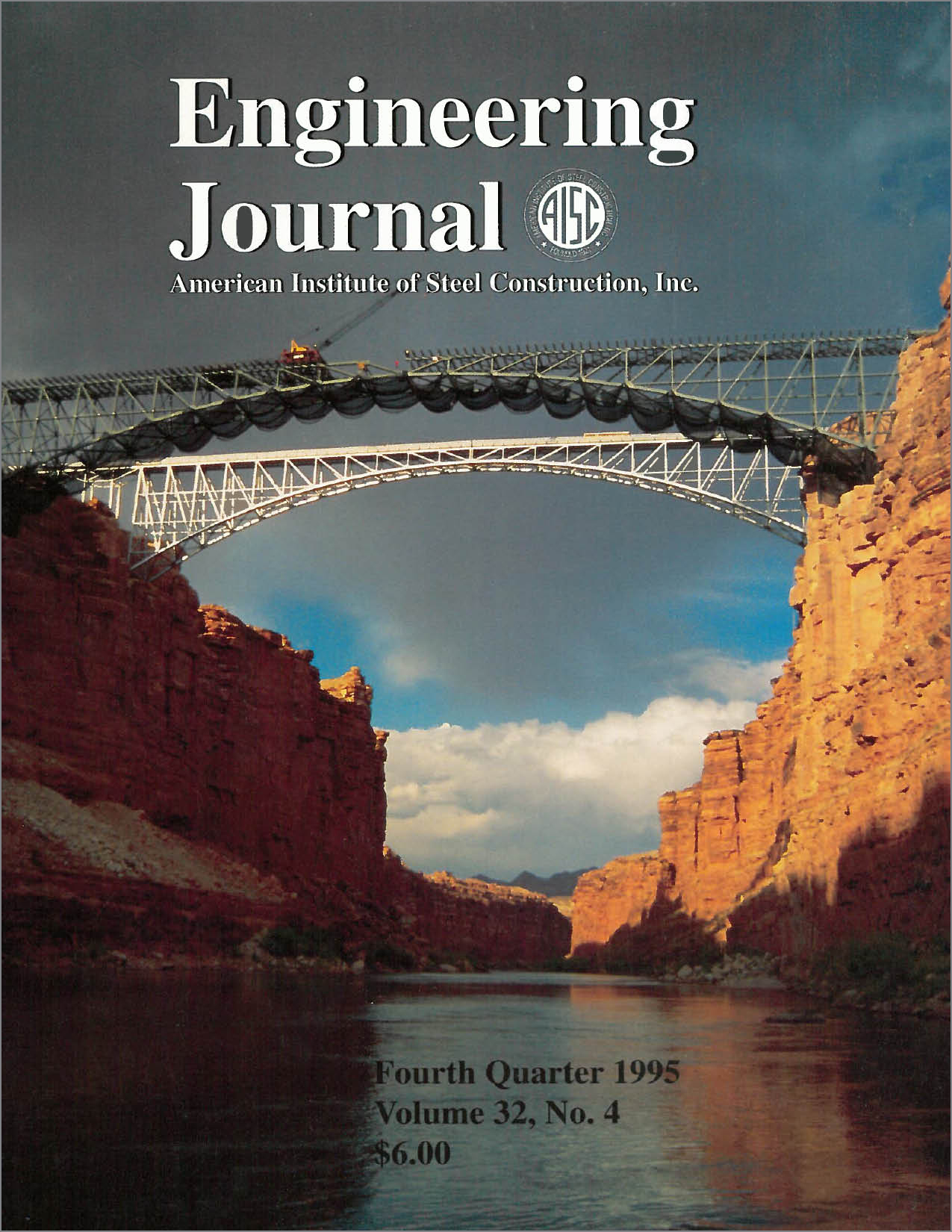Partially Restrained Composite Beam-To-Girder Connections
DOI:
https://doi.org/10.62913/engj.v32i4.649Abstract
Advancements in design technology and construction materials have enabled engineers to design longer spanning and shallower composite beam floor systems. The beams in these floor systems are typically designed as simply supported members which, in many instances, leads to the design being controlled by construction or live load deflection criteria rather than strength. If the beams were designed as continuous beams (having rigid connections) or partially continuous beams (having partially restrained connections) then deflection problems would be minimized and the strength of the composite beam could be more fully utilized. In recent years several research programs have investigated the strength and rotational stiffness of beam-tocolumn connections in buildings with composite slabs that are continuous over the connection region. These connections have been termed "Semi-Rigid Composite Connections" (SRCC) or more recently "Partially Restrained Composite Connections."ť This research has shown that SRCC are capable of providing a range of rotational stiffness from what could be classified as a pinned connection to what could be classified as a rigid connection. The key to SRCC behavior is the continuous composite slab which is reinforced with reinforcing steel and passes over the connection region. Because the composite slab is also continuous over beam-to-girder connections it seems probable that the idea of SRCC could be applied to these connections. This would lead to beam-to-girder connections with rotational resistance (partially restrained (PR) beam-to-girder connections) that could then be used to design composite beams as partially continuous rather than simply supported.

